Top of Page
- Links to move inside this page.
- HOME
- Investor Relations
- IR Library
- QAs from earnings release meetings and others
- 3Q FY20 Results Briefing (Online)
QAs from earnings release meetings and others
February 8, 2021: 3Q FY20 Financial Results Briefing (Online)
(*) This is a summary of questions and answers took place at the Briefing.
- Question: IIJ is running various network camera connection projects. Please kindly elaborate what is IIJ's competitive advantages when it comes to IoT business.
- Answer: Since March 2018, we have been developing and providing full-MVNO services and/or functions such as eSIM, SoftSIM, and SIM Life Cycle Management functions. Moreover, we are equipped with various enterprise network services and system integration (SI) know-hows. In addition to mobile connectivity, we can offer cloud services needed to accumulate data gathered through IoT sensors, security services needed to store data safely and securely and other necessary elements to construct IoT systems. This comprehensiveness of IIJ's offering is working as a very strong competitive advantage and we are able to acquire various IoT projects ranging from network camera connection to facility remote monitoring.
- Question: Do you expect the strong demands for enterprise network services to continue next fiscal year?
- Answer: We think that digital shift just took off in Japan. Along with advancement of IT utilization by both private and public sectors, we expect the demands for our various network services should continue to expand.
- Question: Consumer mobile competition in Japan seems get intensified. Please kindly tell us IIJ's mobile service strategy going forward.
- Answer: We shall continue to provide services to both enterprise and consumer as we can expect to improve profitability by gathering various mobile traffic such as enterprise, IoT, and consumer to the common mobile infrastructure to achieve higher infrastructure utilization. As for enterprise mobile, we shall leverage our full-MVNO functions such as chipSIM, eSIM and SIM Life Cycle management, differentiate ourselves by having SI toward our blue-chip customer base. As for consumer mobile services, we’d like offer competitive service plans and we plan to announce new consumer mobile plans on February 24, 2021.
- Question: What is your outlook for mobile interconnectivity charge?
- Answer: In March 2020, based on the future cost method, MNOs announced their mobile interconnectivity unit charge to be adopted for FY2020, FY2021 and FY2022. NTT Docomo's decrease rate were 16.0%, 19.8%, and 15.9%, respectively. In October 2020, the Ministry of Internal Affairs and Communications (the MIC) announced in their so-called action plan that they would aim for 50% decrease in 3 years regarding mobile interconnectivity charge. Even after the action plan was announced, this matter is still been discussed at the council meetings at the MIC and others. The next time MNOs are expected to announce their mobile interconnectivity unit charge for FY2021, FY2022 and FY2023 is between February and March 2021.
- Question: Could you kindly explain what you mean by "recognized profit due to NTT Docomo's FY2019 mobile interconnectivity (unit charge) decrease of 13.4% YoY"?
- Answer: From 1Q20, we have been using FY2020 unit charge disclosed by NTT Docomo. Such unit charge is a decrease of 16.0% from FY2018 NTT Docomo's actual costs and demands. In January 2021, FY2019 unit charge, which is an internal number of the above mentioned 16.0% decrease rate, was fixed and it decreased by 13.4% from FY18 unit charge. Because we recorded FY19 usage by using certain unit charge, which is within the range of 16.0% decrease, the fixed FY19 unit charge decreased larger than what we used to record FY19 usage, we recognized approximately JPY0.7 billion of profit in 3Q20 as the difference between what we recorded in FY19 and the actual cost using the fixed FY19 decrease rate of 13.4%.
- Question: While order-received for systems construction is increasing constantly, year over year growth of order-received for systems operation and maintenance fluctuates. Could you kindly explain why?
- Answer: Because order-received for systems operation and maintenance is recorded upon contract renewal, depending on such timing, the volume of order-received fluctuate. Please note that the last fiscal year, order-received for 2Q and 3Q SI operation and maintenance fluctuated, which is making a change in year over year rate for this fiscal year. (On February 8, 2021 at 19:10 (JST) we disclosed that we corrected some figures of order-received for systems operation and maintenance disclosed in our 3Q20 earning release and the presentation material announced on February 8, 2021 at noon (JST))
End of the page.


